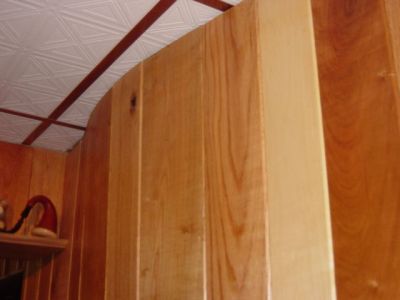Cleaning Bandmill Blades
Tricks for getting the sap and pitch off bandsaw mill blades. March 3, 2006
Question
We recently purchased a sharpener and setter for our band blades. It works real well, but we have yet to find a good way to clean pine sap and pitch off the blades. Any suggestions?
Forum Responses
(Sawing and Drying Forum)
From contributor B:
Clean them before you take them off the saw. They should be clean as you use them, but if you get a buildup, run a heavy dose of whatever you're using as a lube.
From contributor R:
I clean mine in a caustic soda (lye) solution heated to 160 degrees in a 55 gallon drum with a heating element.
From contributor L:
There are a couple of things that have worked very well for me and are inexpensive. First, if you happen to remove the blade from the mill and it has the sap and pitch baked on it, get a can of Bug and Tar Remover from your local auto parts store and simple spray the body of the blade with it. I do one side at a time. After wetting it, I use a small brass brush, which can be found in the paint section or the tool department at Lowe's or Home Depot, to brush in circles against the body of the blade after the fluid has sat on it for a minute or so. After brushing, wipe clean and proceed with setting and sharpening.
You can clean the blades to a certain extent on your mill by running some type of lubricant or cleaner on it while the blade is in motion, but what many fail to mention and we as operators soon realize, is that typically the friction only benefits the top side (unless you have a misting system that sprays the underside of the blade, too). I like running an orange citrus cleaner - sold in the automotive section of most stores - that is advertised as a degreaser. It works very well - not 100% - but well. A can of Bug and Tar Remover and that little brush make quick, inexpensive work of the problem.
As a side note, if you're getting lots of build up of sap on your blade, widen your set and it might decrease.
From contributor A:
I use cheap oven cleaner. Wearing tough rubber gloves from the feed store, I spray the blades with oven cleaner and wipe with a metal scrubbing pad, then rinse with water. They will look like a new nickel. Handle with care.
From contributor T:
I use diesel fuel as a lube on my mill. Either a very slow drip or give it a shot when you notice it starting to accumulate. The next cut through the log, it is all gone. This also eliminates blade rusting, so they are easier to sharpen and set. Most of the time I don't use any lube, if cutting hardwoods. I am in Canada and find diesel fuel works good on frozen logs as well.
From contributor E:
We cut a 55 gallon drum in two (around the middle). One side has a lye solution (just lye and water) and the other has vinegar and water. Drop the rolled blade in the lye for a few minutes, pull it out (with wire hooks) and drop it in the vinegar water. The vinegar water neutralizes the lye so that your fingernails don't fall off. Cover your eyes... that stuff is bad news.
From contributor R:
As far as lube, I have been adding borax to mine for several months now. I haven't had as many problems with pitch buildup on the blades, and it seems to have helped with stain and bugs.
From contributor O:
The best way I know to get pitch off saw blades doesn’t seem to be very well known. Washing soda is another name for sodium carbonate. It is available from well-stocked laundry sections in supermarkets. The box that I have is Arm & Hammer brand, and is called "Super Washing Soda." I have also seen the same brand with the name "Detergent Booster" on the package. Mix at a ratio of about a cup of powder (maybe a dime’s worth) to a gallon of warm water. Soak your blades in this for a minute or two. Alternatively, you can brush the solution onto the blade to dissolve the gum. After a short soaking, the gum will rub off the blades easily. It also works on table saw blades. Nothing else that I've tried works faster or easier. Also, it's the safest solvent you'll find.
